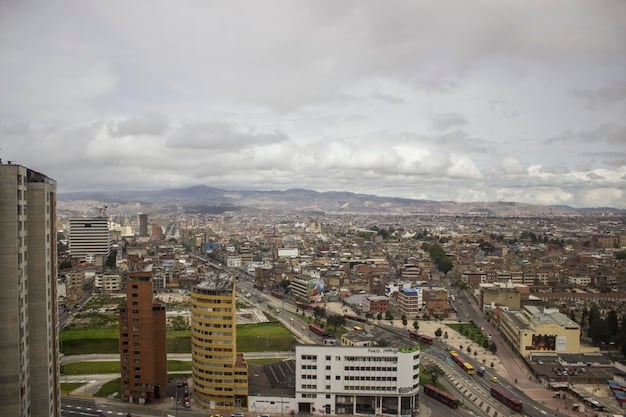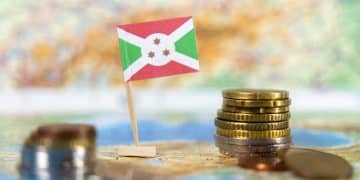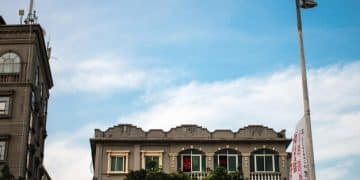Peruvian Interest Rate Hike: Impact on US Investors

The Peruvian Central Bank’s recent interest rate hike aims to combat inflation, but it raises concerns for US investors who may see impacts on their investments, currency exchange rates, and overall portfolio performance in Peru.
The Peruvian Central Bank’s latest interest rate hike: What Does It Mean for US Investors? This decision, made in response to rising inflation, has ripple effects that extend far beyond Peru’s borders, particularly impacting those in the United States with investments in the Peruvian economy.
Understanding Peru’s Interest Rate Hike
Peru’s central bank, like many others around the world, uses interest rate adjustments as a primary tool to manage inflation and stabilize its economy. When inflation rises, the central bank often increases interest rates to cool down spending and encourage savings.
Why Raise Interest Rates?
The core reason for raising interest rates is to combat inflation. Higher interest rates make borrowing more expensive, which reduces consumer and business spending. This decreased demand can help to slow down the pace at which prices increase.
- Controlling Inflation: The primary goal is to keep inflation within the target range set by the central bank.
- Stabilizing the Currency: Higher interest rates can attract foreign investment, strengthening the Peruvian Sol.
- Managing Economic Growth: The central bank aims to balance growth with price stability.
Understanding the motivations behind this decision is crucial for US investors to assess how it will affect their financial interests.

How the Hike Affects the Peruvian Economy
The interest rate hike can impact various sectors of the Peruvian economy, with both positive and negative consequences. While it aims to stabilize prices, it can also affect economic growth and employment.
The immediate effects can be seen in the cost of borrowing. Businesses and individuals will face higher interest rates on loans, mortgages, and other forms of credit. This can lead to reduced investment and spending.
Impact on Businesses
Businesses may postpone or cancel investment plans due to the increased cost of borrowing. This can slow down economic growth but also reduce inflationary pressures.
Impact on Consumers
Consumers will also feel the pinch as their borrowing costs rise. This can affect spending on major purchases like homes and cars, as well as day-to-day spending.
- Reduced Investment: Higher borrowing costs can deter businesses from investing in expansion or new projects.
- Decreased Spending: Consumers may cut back on spending as their loans become more expensive.
- Currency Appreciation: The Peruvian Sol may strengthen against the US dollar.
Overall, the interest rate hike is a balancing act, aiming to control inflation while minimizing the negative impact on economic growth. The central bank will need to monitor the situation closely to ensure that the measures are effective and do not unduly harm the economy.
Direct Impact on US Investments in Peru
For US investors, changes in Peru’s monetary policy can have significant and varied effects. Understanding these impacts is crucial for making informed investment decisions.
One of the most direct effects is on the value of investments denominated in Peruvian Sol (PEN). If the interest rate hike strengthens the Sol, US investors holding PEN-denominated assets will see their value increase when converted back to US dollars.
Currency Exchange Rates
Changes in interest rates can have a direct impact on currency exchange rates. Higher interest rates in Peru can attract foreign investment, which increases demand for the Peruvian Sol and strengthens its value against the US dollar.
This means that if a US investor holds an asset in Peruvian Sol, the value of that asset increases when converted back to US dollars, as each Sol is worth more. This results in a gain for the investor.
Conversely, if the interest rate hike does not have the intended effect and the Sol weakens, US investors could see a decrease in the value of their investments when converted back to dollars.

Indirect Effects on US Investors
Beyond the direct impact on currency values, US investors may experience indirect effects on their investments in Peru.
The most notable indirect effect is on the profitability and growth prospects of Peruvian companies. If the interest rate hike slows down the Peruvian economy, businesses may see reduced sales and earnings. This could negatively impact the value of US investments in Peruvian stocks, bonds, or other assets.
Economic Slowdown
Rising interest rates can lead to an economic slowdown, which can affect the performance of Peruvian companies. Reduced consumer spending and investment can lead to lower earnings and decreased stock values.
Sector-Specific Impacts
Certain sectors may be more affected than others. For example, industries that rely heavily on borrowing, such as real estate or construction, may face greater challenges in a high-interest-rate environment.
- Reduced Profitability: Slower economic growth can lead to lower profits for Peruvian companies.
- Increased Risk: Higher interest rates can increase the risk of defaults on loans and bonds.
- Market Volatility: Changes in interest rates can lead to increased volatility in the Peruvian stock market.
US investors need to consider these indirect effects when assessing the overall risk and return profile of their investments in Peru.
Strategies for US Investors
Given the potential impacts of Peru’s interest rate hike, US investors should consider several strategies to manage their risk and optimize their returns.
Portfolio diversification is one of the most effective ways to mitigate risk. By diversifying investments across different asset classes and countries, investors can reduce their exposure to any single event or market.
Diversification
Spreading investments across different sectors and asset classes can help to reduce risk. Consider holding a mix of stocks, bonds, and real estate to minimize the impact of any single event.
Hedging Currency Risk
Currency hedging can help protect against fluctuations in exchange rates. Use financial instruments like currency forwards or options to lock in a specific exchange rate for future transactions.
Seeking Professional Advice
Consulting with a financial advisor who understands the Peruvian market can provide valuable insights and guidance. A professional can help assess the specific risks and opportunities associated with investments in Peru.
- Diversify Your Portfolio: Allocate investments across different assets and countries to reduce risk.
- Hedge Currency Exposure: Use financial instruments to protect against exchange rate fluctuations.
- Stay Informed: Keep up-to-date with the latest economic and political developments in Peru.
By implementing these strategies, US investors can better navigate the challenges and opportunities presented by Peru’s latest interest rate hike.
Long-Term Investment Outlook in Peru
Despite the short-term challenges posed by the interest rate hike, the long-term investment outlook for Peru remains positive.
Peru has a stable political system, a growing economy, and a wealth of natural resources. These factors make it an attractive destination for foreign investment. The country has also made significant progress.
However, it is important to acknowledge that the long-term investment outlook for Peru is not without its risks. Political instability, social unrest, and fluctuations in commodity prices can all impact the country’s economic performance.
Growth Opportunities
Peru’s economy is expected to continue growing in the coming years, driven by exports, domestic demand, and government investment in infrastructure. This growth can create opportunities for US investors in a variety of sectors.
Risks and Challenges
Political instability, social unrest, and fluctuations in commodity prices can all impact the country’s economic performance. Investors should be aware of these risks and factor them into their investment decisions.
- Potential for High Returns: Peru’s growing economy offers opportunities for significant investment gains.
- Diversification Benefits: Investing in Peru can help diversify a US-based investment portfolio.
- Long-Term Growth Potential: Despite short-term challenges, Peru’s long-term economic outlook remains positive.
Conclusion
The Peruvian Central Bank’s decision to raise interest rates is a significant event that has implications for US investors. While it aims to control inflation and stabilize the economy, it also presents risks and opportunities for those with investments in Peru.
| Key Point | Brief Description |
|---|---|
| 📈 Interest Rate Hike | Peru raised interest rates to combat inflation. |
| 💰 Currency Impact | Higher rates may strengthen the Peruvian Sol. |
| 📊 Economic Slowdown | Hike could lead to reduced business and consumer spending. |
| 🛡️ Investment Strategies | Diversify, hedge currency risk, seek advice. |
Frequently Asked Questions (FAQ)
▼
The primary reason was to combat rising inflation. By increasing interest rates, the central bank aims to reduce spending and encourage savings, which can help stabilize prices.
▼
Higher interest rates can attract foreign investment, increasing demand for the Sol and potentially strengthening its value against other currencies like the US dollar.
▼
Potential risks include an economic slowdown in Peru, reduced profitability for Peruvian companies, and fluctuations in currency exchange rates affecting the value of investments.
▼
Strategies include diversifying portfolios across different asset classes and countries, hedging currency risk to protect against exchange rate fluctuations, and seeking professional financial advice.
▼
The long-term outlook remains positive due to Peru’s stable political system, growing economy, and natural resources, though risks such as political instability and commodity price volatility exist.
Conclusion
By understanding the motivations behind the rate hike, its potential effects, and strategies for managing risk, US investors can make informed decisions about their investments in Peru. Staying informed and seeking professional advice are key to navigating this evolving economic landscape.





